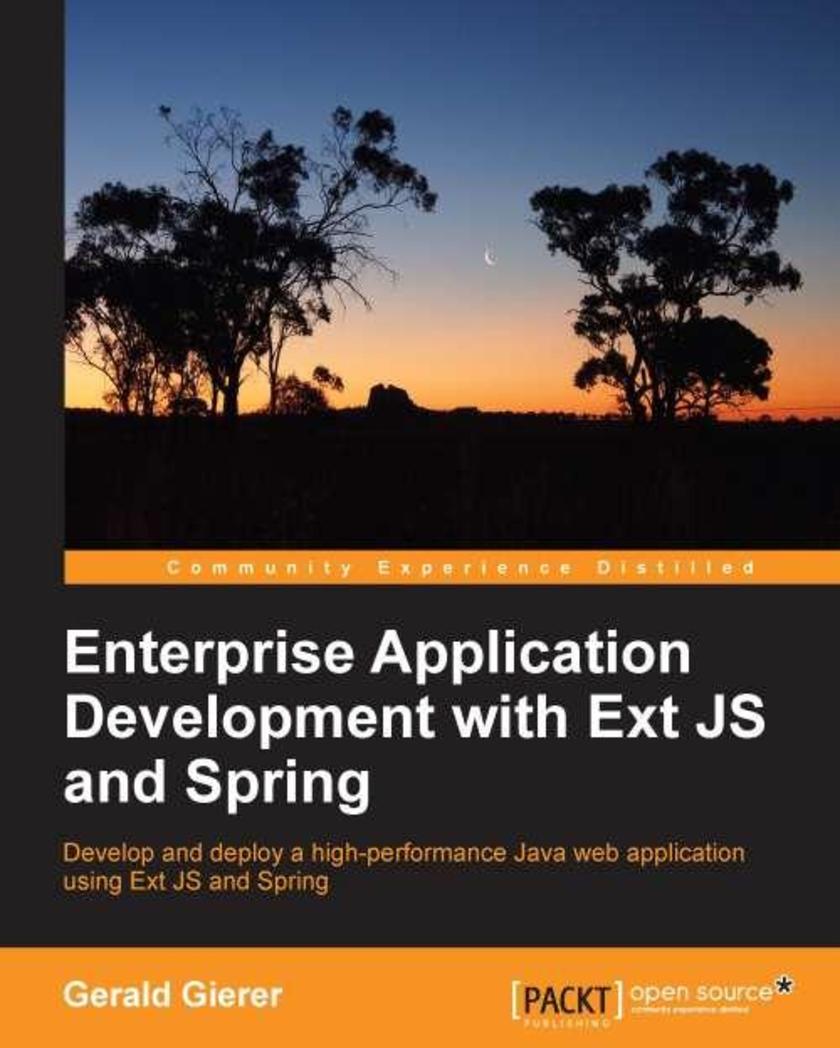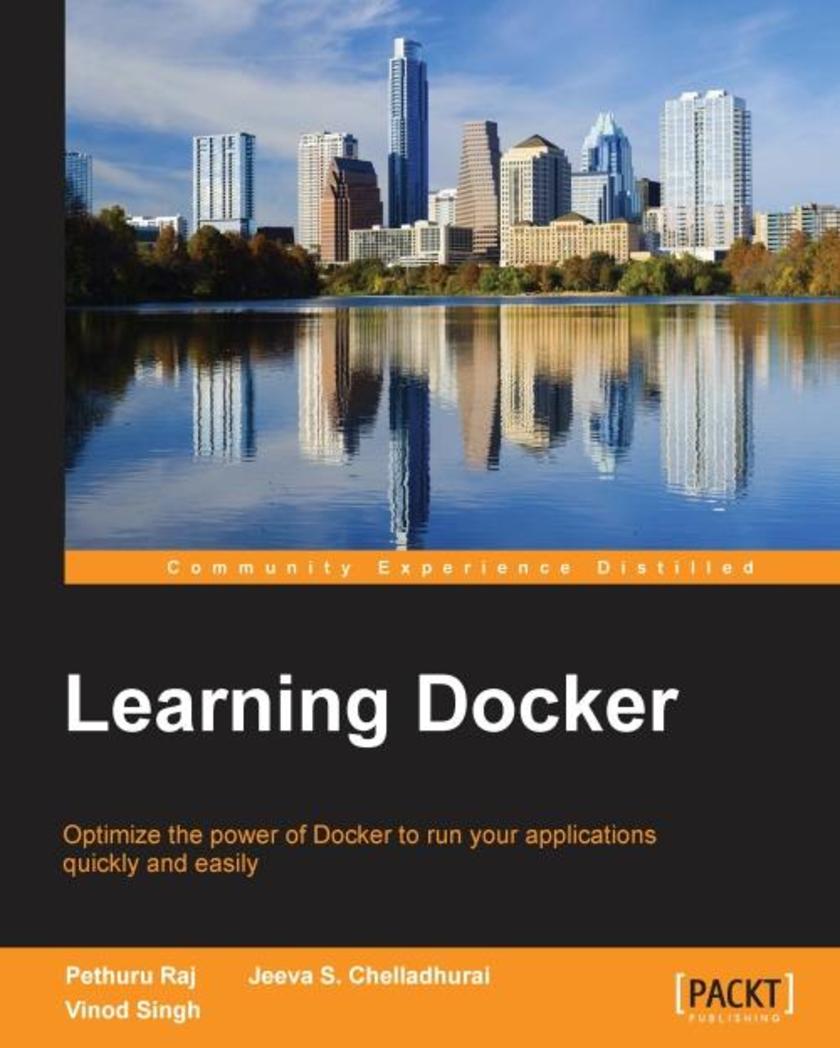
Joomla! 2.5 Beginner’s Guide
¥90.46
Written with a fast-paced but friendly and engaging approach, this Packt Beginner's guide is designed to be placed alongside the computer as your guide and mentor. Step-by-step tutorials are bolstered by explanations of the reasoning behind what you are doing. You will quickly pick up the necessary skills, tips, and tricks for building a successful Joomla! website. This book is written for beginners to website design. By the end of the book you will have built a complete custom content managed website, and be ready to build any kind of website.

VMware vRealize Orchestrator Cookbook
¥90.46
If you are a VMware administrator who is interested in automating your infrastructure, this book is for you. An understanding of basic programming concepts is advised. No previous knowledge of Orchestrator is required, although some previous knowledge of it will allow you to get started more easily.

Vaadin 7 Cookbook
¥90.46
This is a cookbook with easy-to-follow recipes containing practical and detailed examples which are all fully backed up with code, illustrations, and tips. "Vaadin 7 Cookbook" is for developers who want to create Rich Internet Applications with Vaadin. Both newcomers to Vaadin and those who have some experience with it will find recipes to expand their working knowledge of Vaadin.

Microsoft System Center Service Manager 2012 Cookbook
¥90.46
This book is written in practical cookbook style and it offers learning through vivid examples and. Each chapter contains step-by-step instructions about everything necessary to execute a particular task. The book is designed so that you can read it from start to end for beginners or just open up any chapter and start following the recipes as a reference for advanced users,This book will be useful to IT professionals including System Center Service Manager administrators who want to configure and administer System Center Service Manager 2012 and understand how to solve specific problems and scenarios that arise while using System Center Service Manager. It will also be useful to users of 2010 in learning new features and capabilities.

Windows Server 2012 Unified Remote Access
¥90.46
"Windows Server 2012 Unified Remote Access Planning and Deployment" is a quick start tutorial full of step-by-step instructions to guide you through planning and deploying Unified Remote Access; the successor to DirectAccess. If you are a System Administrator or Engineer who has strong knowledge of networking and deployment for the Microsoft family of operating systems and software, then "Windows Server 2012 Unified Remote Access Planning and Deployment" is for you. You should have a sound understanding of TCP/IP networking, as well as deploying and supporting Windows Server and Client operating systems.

VMware vCloud Director Cookbook
¥90.46
"VMware vCloud Director Cookbook" will adopt a Cookbook-based approach. Packed with illustrations and programming examples, this book explains the simple as well as the complex recipes in an easy-to-understand language."VMware vCloud Director Cookbook" is aimed at system administrators and technical architects moving from a virtualized environment to cloud environments. Familiarity with cloud computing platforms and some knowledge of virtualization and managing cloud environments is expected.

Visual Media Processing Using Matlab Beginner's Guide
¥90.46
Written in a friendly, Beginner's Guide format, showing the user how to use the digital media aspects of Matlab (image, video, sound) in a practical, tutorial-based style.This is great for novice programmers in any language who would like to use Matlab as a tool for their image and video processing needs, and also comes in handy for photographers or video editors with even less programming experience wanting to find an all-in-one tool for their tasks.

WiX 3.6: A Developer’s Guide to Windows Installer XML
¥90.46
A step-by-step tutorial with plenty of code and examples to improve your learning curve. If you are a developer and want to create installers for software targeting the Windows platform, then this book is for you. You’ll be using plenty of XML and ought to know the basics of writing a well-formed document. No prior experience in WiX or Windows Installer is assumed. You should know your way around Visual Studio to compile projects, add project references and tweak project properties.

Network Analysis using Wireshark Cookbook
¥90.46
Network analysis using Wireshark Cookbook contains more than 100 practical recipes for analyzing your network and troubleshooting problems in the network. This book provides you with simple and practical recipes on how to solve networking problems with a step-by-step approach.This book is aimed at research and development professionals, engineering and technical support, and IT and communications managers who are using Wireshark for network analysis and troubleshooting. This book requires a basic understanding of networking concepts, but does not require specific and detailed technical knowledge of protocols or vendor implementations.

Enterprise Application Development with ExtJS and Spring
¥90.46
An easy-to-follow tutorial, that breaks down the enterprise application development journey into easy to understand phases documented by clear examples and concise explanations.If you are an intermediate developer with a good understanding of Java, JavaScript and web development concepts, this book is ideal for you. Basic ExtJS development experience, including an understanding of the framework APIs is needed by those of you who are interested in this book. Regardless of your experience and background, the practical examples provided in this book are written in a way that thoroughly covers each concept before moving on to the next chapter.

Mastering Node.js
¥90.46
This book contains an extensive set of practical examples and an easy-to-follow approach to creating 3D objects.This book is great for anyone who already knows JavaScript and who wants to start creating 3D graphics that run in any browser. You don’t need to know anything about advanced math or WebGL; all that is needed is a general knowledge of JavaScript and HTML. The required materials and examples can be freely downloaded and all tools used in this book are open source.

PrimeFaces Beginner's Guide
¥90.46
A guide for beginner’s with step-by-step instructions and an easy-to-follow approach.PrimeFaces Beginners Guide is a simple and effective guide for beginners, wanting to learn and implement PrimeFaces in their JSF-based applications. Some basic JSF and jQuery skills are required before you start working through the book.

Learning AirWatch
¥90.46
If you are a technical professional who wants to dive deeper into the functionality offered by AirWatch or manage the solution, then this book will help you choose the best set of configuration, device management, and monitoring options that you can use to effectively manage your EMM implementation.

Final Cut Pro X Cookbook
¥90.46
Written in cookbook style, this book offers many recipes to edit slick, professional videos with FCPX. Each recipe contains step-by-step instructions followed by analysis of what was done in each task and other useful information. The book is designed so that you can read it chapter by chapter, or you can look at the list of recipes and refer to them in no particular order. If you’ve been toying around with iMovie and want more power or you’ve taken FCPX for a whirl and simply can’t find the fastest, most efficient workflow, this book will help! Veteran editors will find just as much useful info as FCPX is radically different than its predecessor, Final Cut Pro 7.

IBM Cognos Business Intelligence 10.1 Dashboarding cookbook
¥90.46
This book is written in the style of a cookbook, with emphasis on practical, step-by-step recipes augmented with real screenshots and little to no theory. This approach will help you follow each step, each link, and see the bigger picture,If you are a user with basic knowledge of Cognos BI (any version) and want to learn the advanced and latest dashboarding capabilities shipped with IBM Cognos BI, this book is for you.

Learning Docker
¥90.46
If you are an application developer who wants to learn Docker in order to utilize its features for application deployment, then this book is for you. No prior knowledge of Docker is required.

Oracle ADF Faces Cookbook
¥90.46
This is a cookbook that covers more than 80 different recipes to teach you about different aspects of Oracle ADF Faces. It follows a practical approach and covers how to build your components for reuse in different applications. This book will also help you in tuning the performance of your ADF Faces application. If you are an ADF developer who wants to harness the power of Oracle ADF Faces to create exceptional user interfaces and reactive applications, this book will provide you with the recipes needed to do just that. You will not need to be familiar with Oracle ADF Faces, but you should be comfortable with Java application development, Java EE frameworks, and JSF. This book is also for ADF developers who know how to use Oracle ADF Faces but who want to know what’s new in Oracle ADF Faces 12c.

MariaDB Cookbook
¥90.46
A practical cookbook, filled with advanced recipes , and plenty of code and commands used for illustration,which will make your learning curve easy and quick. This book is for anyone who wants to learn more about databases in general or MariaDB in particular. Some familiarity with SQL databases is assumed, but the recipes are approachable to almost anyone with basic database skills.

Administering ArcGIS for Server
¥90.46
This book is a practical, stepbystep tutorial providing a complete reference guide to the setup, installation, and administration of ArcGIS Server technology. If you are a GIS user, analyst, DBA, or programmer with a basic knowledge of ESRI GIS, then this book is for you.

Functional Python Programming
¥90.46
This book is for developers who want to use Python to write programs that lean heavily on functional programming design patterns. You should be comfortable with Python programming, but no knowledge of functional programming paradigms is needed.

Blender Cycles: Materials and Textures Cookbook - Third Edition
¥90.46
This book is aimed at those familiar with the basics of Blender, looking to delve into the depths of the Cycles rendering engine to create an array of breath-taking materials and textures.




 购物车
购物车 个人中心
个人中心



